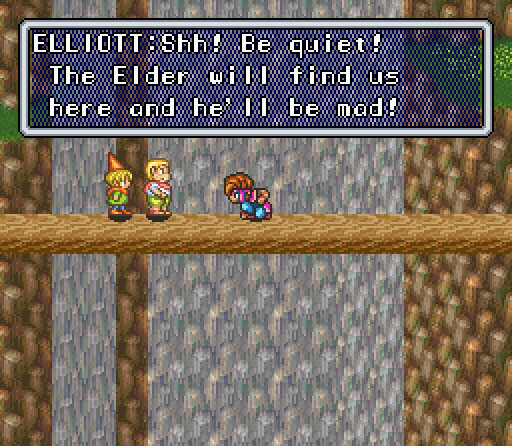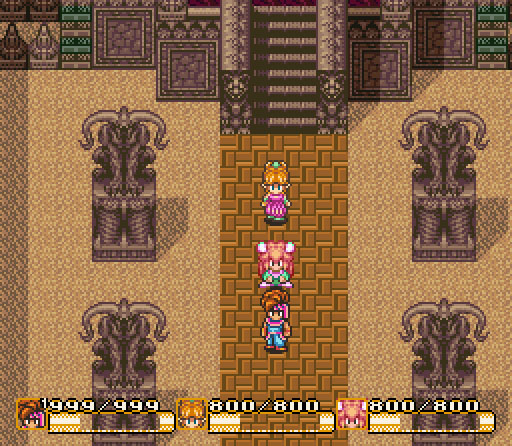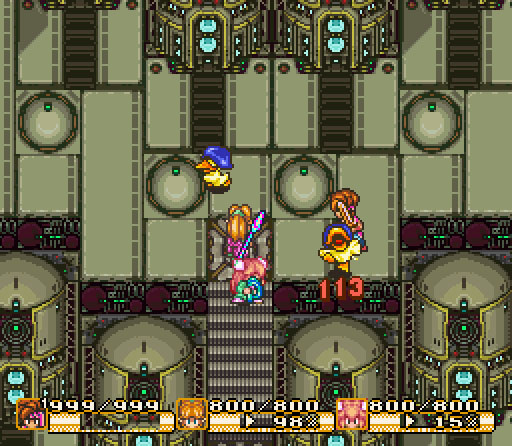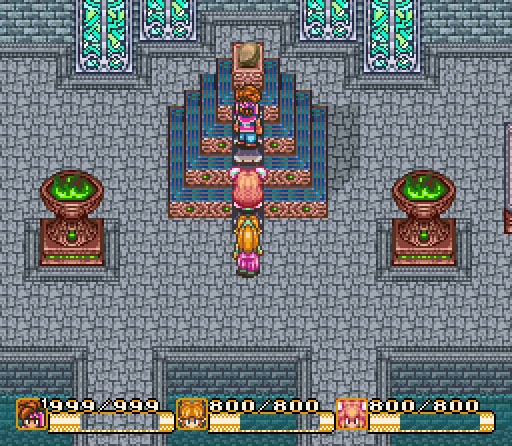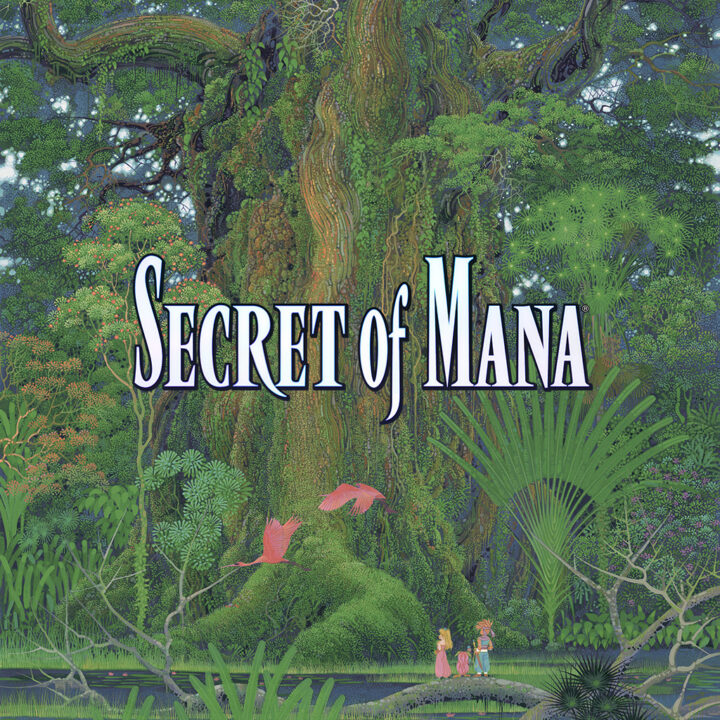2023 has been a banner year for JRPGs. Between big-budget games like Final Fantasy XVI, “AAA-lite” experiences like Octopath Traveler II, and smaller indies like Sea of Stars, there are great adventures to be had no matter your console of choice. The genre’s future has arguably never been brighter—and yet, there are still plenty of reasons to look back to the past.
Secret of Mana celebrates its 30th anniversary here in North America on October 3rd. The second entry in Square Enix’s Seiken Densetsu franchise (known outside Japan as the Mana series), Secret of Mana follows up 1991’s Seiken Densetsu: Final Fantasy Gaiden—titled Final Fantasy Adventure in North America. The series originated as a spin-off of the Final Fantasy franchise (unsurprising, given the latter’s wild success) but soon grew into its own. The franchise spans more than 15 entries, including remakes of Final Fantasy Adventure (Adventures of Mana), Secret of Mana, and Trials of Mana.
A landmark action RPG of yesteryear, Secret of Mana still maintains a fervent fanbase thanks to its colorful world, subtle charms, and killer soundtrack. If you played the game on the SNES, the 2017 SNES Classic, or via 2019’s Collection of Mana for Nintendo Switch, you know what to expect. But if you’re new to the series, you might wonder if it’s worth a play-through over some of its contemporaries.
As someone who’d never played Secret of Mana before, I came into my experience expecting the world. And while I don’t wish to offend anyone who finds the game a timeless comfort, I must be honest. Despite its storied pedigree, Secret of Mana simply doesn’t hold up under a modern microscope. It’s a lukewarm JRPG hampered by one-note combat, cumbersome menus, frustrating difficulty spikes, and a forgettable narrative. It has its moments, but Chrono Trigger and Final Fantasy VI this game is not.
Secret of Mana stars a hero named Randi. One day, when playing with some friends from the village of Potos, Randi falls into a lake. As he looks to rejoin his buddies, Randi comes across a mysterious sword. A voice compels him to pull the sword from its resting place. Armed with the weapon, Randi makes his way back to Potos, only to learn from the village elder that he’s taken the Mana Sword—and unleashed an army of monsters upon the world.
As punishment, Randi is banished from the village, and must embark on a journey to restore power to the Mana Sword and bring peace back to the land. Randi’s objective is to visit eight Mana Temples strewn across the land. Along the way, he meets two companions—a girl named Primm and a sprite named Popoi—and enlists their help on his quest.
Secret of Mana sets itself up for an epic adventure, yet contrary to its SNES peers, it leaves much to be desired. Unlike Final Fantasy VI, which offers compelling characters and nuanced backstories, or Chrono Trigger, which weaves an engrossing tapestry of a plot, Secret of Mana accomplishes neither. Its dialogue is stilted, its main characters aren’t interesting, and its plot is paper-thin. I often found myself talking to NPCs, reading something dull or nonsensical, and regretting the interaction. “Why did they say that?” I wondered. I never truly found out.
In fairness, Secret of Mana’s story and characters are more of a conduit for its gameplay. In 1993, the game was fairly revolutionary. It marked one of the first JRPGs you could play not just solo, but with up to two of your friends. (You needed a Multitap to enjoy three-player, however.) Each player controlled a different member of the party, each with their own weapons, spells, items, and armor. Essentially, you had the precursor to series like Diablo and Monster Hunter.
It sounds cooler than it plays, sadly. I ventured through Secret of Mana solo, and just that experience alone was enough to turn me off from the game. The combat system differs from other SNES-era JRPGs in that the action takes place entirely in real time. As Randi, Primm, or Popoi, you run around an overworld attacking enemy creatures with your sword (or spear, or axe, or another preferred weapon). Wack something enough times, and it’ll fall, giving you space to move on to the next.
It’s pretty standard fare—and if that’s all there were to a game like Secret of Mana, I wouldn’t be too disappointed. This game is 30 years old after all, and I knew coming in not to expect the complexity of, say, NieR: Automata. Unfortunately, Secret of Mana tries at every turn to make gameplay a frustrating mess.
For one, the pacing is a slog. You can’t attack with any real rhythm; if you follow up one attack with another, you’ll deal only a fraction of the damage. Instead, you have to wait until a meter under your character’s name fills up to 100%, signaling you can attack at full power again. I assume this was done to discourage button-mashing and incentivize teamwork. But when playing solo, it’s the equivalent of watching baseball with a long pitch clock—it’s a snooze.
Another strike against combat: the stagger state. Get a critical hit on your enemy, and you’ll stagger them. This puts them in a vulnerable state, giving your party the opportunity to wail on them. But the opposite also applies: Certain enemy strikes will send your character flying. Get stuck in a corner, and you can die in a blink, sending you back to your last save. This often led to some particularly brutal difficulty spikes, especially in areas with large groups of enemies.
Perhaps the most egregious part of combat is Secret of Mana’s pause state. The game features a radial-style menu that lets you swap between weapons, select spells, and even customize your party’s AI (for when you’re playing solo). Stylistically, it’s a cool-looking menu. Practically, though, it’s a hot mess. Each face button corresponds to a different character, while the fourth button serves as your typical cancel action. I can’t tell you how many times I tried pulling up Randi’s menu, only to pull up Primm’s or Popoi’s, accidentally cancel out, and jump back into the heat of combat. I spent more time battling the game’s controls than the actual enemies.
If the story’s trite and the gameplay’s tedious, what else is there? Never one to end on a downer, I’ll highlight what is by far Secret of Mana’s saving grace: the music. Composed by Hiroki Kikuta, the game’s soundtrack is a sublime masterwork, one that extracts a surprising level of detail out of a rather limited SNES sound chip. There’s the majestic title track “Fear of the Heavens” and the hair-raising “Prophecy.” There’s the somber ballad “Phantom and a Rose,” the mesmerizing arpeggios of “The Wind Never Ceases,” and the beautifully haunting “A Bell Is Tolling.” And, of course, there’s “Into the Thick of It,” an ambient forest theme that rivals Super Mario RPG’s “Forest Maze” as my favorite field tune ever.
Part of what I love so much about Secret of Mana’s music is its sense of scope and scale. For every playful town theme, there’s a gripping battle track, temple motif, or exploration tune that sets the stakes. Not every song is a winner—some songs become especially grating—but the ones that deliver invariably deliver big. This is the type of musical excellence I’d expect from Yasunori Mitsuda or Yoko Shimomura. It’s a shame that Kikuta’s effort is wasted on an otherwise subpar and forgettable game.
I’m sure Secret of Mana still holds a special place in countless SNES owners’ hearts. If you’re one of those stalwarts, I salute you. I imagine Secret of Mana redefined what a JRPG could be, especially when playing alongside some friends. But times have changed, and games have evolved. This year alone, we’ve seen scores of games with stronger gameplay fundamentals, better narratives, and more cogent experiences. That’s not an indictment on a 30-year-old game—it’s just a reminder of how far we’ve come.

